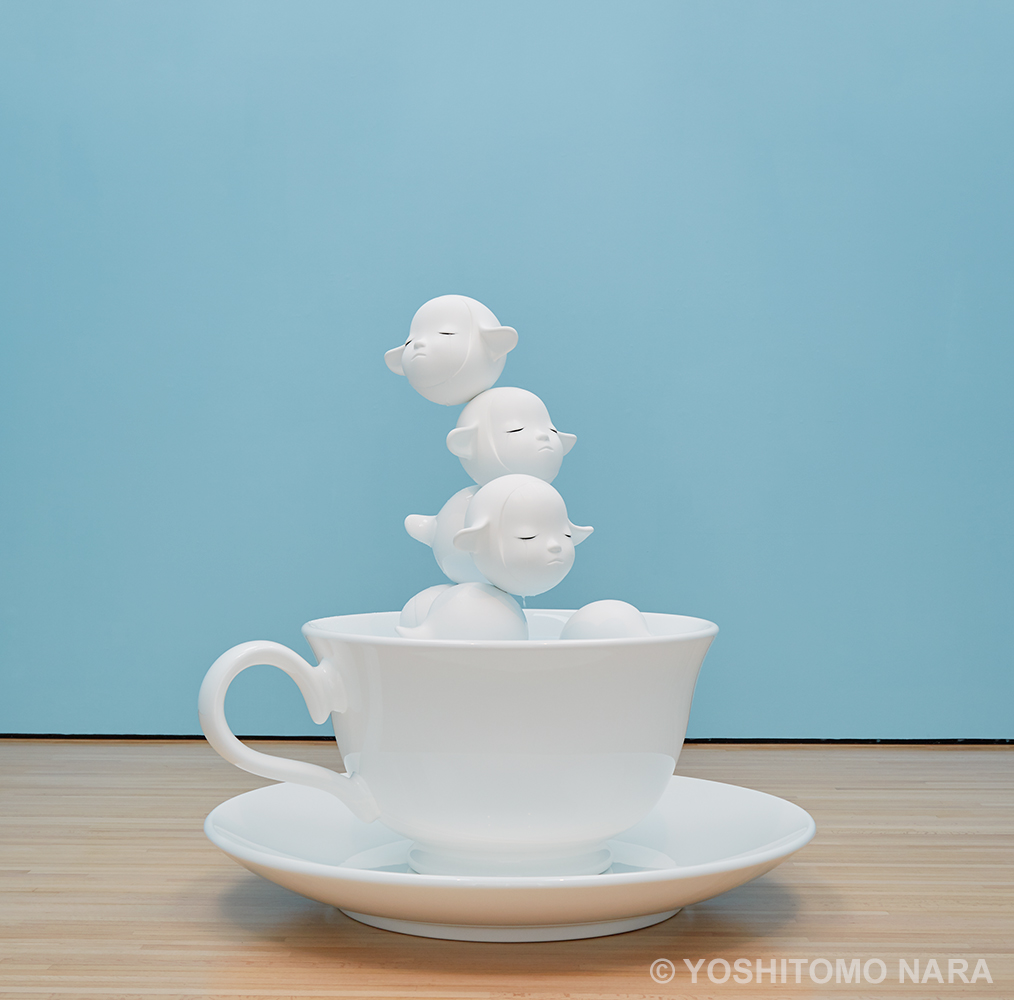Thinking in Silence
“I’m still trying to figure out the meaning of life.”
Yoshitomo Nara
Frequently, Nara has placed his children inside objects, such as houses and boxes, which represent shelter and protection. In 1995, Nara made Cup Kids, a large-scale sculptural installation using painted fiber-reinforced plastic (FRP). It comprises seven gigantic Japanese teacups which each contain a child submerged to their waist in whatever liquid the cups hold. The children have colored hair and clothes, and their eyes are variously open or closed. The oversized teacups are positioned in a circle, bringing back childhood memories of fairground cup and saucer rides, where children sit inside spinning teacups.
Nara’s use of the teacup, a common, everyday item, enables him to create an encircling, safe place and combine this with another of his familiar motifs, the puddle, which offers a passage to a communal area, a path away from isolation. Nara’s motifs are rooted in his emotionally-complex childhood, but he does not intend his imagery to provide only a reflection of his own interior life. He wants viewers to interact with it on their own terms.
In 1999, Nara further developed the teacup device in a group of works titled Quiet, Quiet. Removing all color, except for the celadon of the cups, the white fiberglass recaptures the long tradition of Japanese porcelain, a hard but delicate ceramic. In these sculptures, the children are reduced to being only heads, vertically stacked on top of a single immersed child. Their closed eyes, along with the title, might suggest they are sleeping, but in fact they need silence for contemplation. This is a study of interiority.
In turn, Quiet, Quiet led to the monumental, motorized sculpture Fountain of Life (2001/2014). Here, within a traditional teacup and saucer, the children, wearing sheep-eared balaclavas, are imbued with the innocence of young lambs. Again, their eyes are closed and from a distance they appear serene, but in reality water pours from their eyes, spilling into the cup. This is a fountain of tears, a constant, dynamic flow of sadness that is tangible and never-ending. Rather than offering an uplifting, life-giving source of eternal youth, Fountain of Life appears to foresee an unsettling, melancholy outlook for the future.
But Nara is not without hope. During the Covid-19 pandemic, he painted In the Pink Water (2020) for the cover of the album Survive by G. Yoko, a female singer/songwriter from Ishigaki Island in Okinawa, the southernmost prefecture of Japan. Nara captures the essence of Yoko’s island melodies, and the young girl with eyes closed, holding a daisy in her hands, emanates an ambience of peace and serenity. She stands alone in the pink water, described by Nara as a river, but it does not echo the isolated, submerging water of other works. Instead, in a period when enforced isolation became a reality, the girl seems content in her own company and the river suggests purification, and rebirth.


